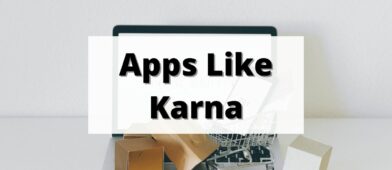If you’ve got dings (or outright dents) on your credit report, you probably already know it can affect many areas of your life. It can affect the insurance rates you pay, loan rates you pay, and even whether or not you get a job.
And yes, it can affect whether a bank will allow you to open a checking account. Luckily, the banking industry has worked to meet those with credit issues halfway, and many banking institutions these days offer “second chance” checking accounts.
These types of accounts can often even be opened for people who have a history of managing prior checking accounts poorly. For instance, maybe you have a history of overdrawing a checking account and not paying the delinquent balance.
Or you may have had several occurrences of overdrafts on one checking account. While those types of banking histories may not qualify for a standard checking account, they can often qualify for a second chance checking account.
Table of Contents
- How are Accounts for Bad Credit Different?
- 1. LendingClub Bank Essential Checking
- 2. Bank of America Advantage SafeBalance Banking®
- 3. Wells Fargo Clear Access Banking
- 4. Aspire Fresh Start Checking
- 5. Fifth Third Express Banking
- Why You Need a Bank Account if You Have Bad Credit
- How to Improve Your Credit Score
- Pay Down Debt Balances
- Get a Secured Credit Card
- Consider Experian Boost™
- Work to Keep New Debt to a Minimum
- Conclusion
How are Accounts for Bad Credit Different?
When you go to open a bank account, many banks run your personal information through a database called ChexSystems. ChexSystems is akin to a credit reporting bureau for bank account holders.
Banks that use ChexSystems (most of them do, but some banks don’t use ChexSystems) can see if you have a history of having bank accounts closed by other banks or a history of multiple overdrafts on a checking account.
If your prior banking history (or credit history in general) is spotty, some banks may not allow you to open a standard checking account. However, a few banks offer “second chance” accounts for those wanting to start fresh.
Second chance checking accounts are different from standard checking accounts in a couple of ways. First, many banks won’t issue checks for second chance account holders.
This is because checks are often used to commit fraud or overdraft an account. Second, there may be lower ATM or point-of-sale daily limits on second chance checking accounts.
And lastly, fees are typically higher on these types of accounts. However, the fees you’ll pay for a second chance checking account will often be much lower than fees you pay at a check-cashing store.
And having a checking account will enable you to set up Direct Deposit for your paycheck and be able to use your money more easily in this world of digitally based banking.
1. LendingClub Bank Essential Checking
LendingClub Bank, formerly Radius Bank, is an online bank that first opened in 1987 and is headquartered out of Boston. The company was voted Best Online Bank in 2020 by Bankrate and has earned other awards as well.
The company’s Essential Checking is a second chance account with the following features and requirements:
- Opening deposit amount: $10
- Minimum balance after opening: None
- Monthly service fee: $9
- Debit card: Available, with some withdrawal and purchase limits
LendingClub Bank also offers Direct Deposit for your paychecks and bill pay. And you can use the LendingClub app to set limits on transactions, turn your debit card on and off, and get alerts.
Pros:
- You can upgrade to a Rewards Checking with a 12-month positive record
- Mobile check deposit available with some limitations
- Mobile wallet available
- Paper checks available
Cons:
- Overdrafts result in a $25 charge and a $5 daily charge each day the account remains negative
- No branch locations
Other features of LendingClub Bank include an integrated financial dashboard that helps you budget your money, track spending, and more.
You can also use the dashboard to link your other financial accounts to, and to track your net worth. Customer service options are attractive as well.
You can call or chat Monday through Friday from 8:30 a.m. to 12 a.m. Customer service is also available on Saturdays and Sundays from 8:00 a.m. to 8:00 p.m.
If you like what you see here, check out our LendingClub Bank review for more information.
Learn more about LendingClub Bank
2. Bank of America Advantage SafeBalance Banking®
Bank of America was founded in 1956 and has over 4,600 branch locations. The company’s Advantage SafeBalance Banking® account was created for students and those with bad credit.
The Advantage SafeBalance Banking account features include:
- Opening deposit amount: $25
- Minimum balance after opening: None
- Monthly service fee: $4.95(See the offer page for ways to waive the monthly fee)
- Debit card: Available, free in-network transactions
This account offers a spending and budgeting tool that can help you keep track of your money. You can make mobile deposits with your phone by using the Bank of America app, and you can use debit card controls to protect your card as well.
Pros
- No overdraft fees
- Low monthly service fee
- Over 16,000 in-network ATMs available
- Same day cash, wire, and direct deposit transfers
Cons
- No paper checks available
- Overdraft transactions will not be paid
It’s important to know that the reason Bank of America doesn’t charge overdraft fees is because they won’t pay any transaction that brings your account into the negative.
This practice could result in you incurring charges from the institution initiating the transaction. Also, there is a hefty $2.50 charge for out-of-network ATM usage, plus what you may be charged from the ATM machine’s host bank.
Member FDIC.
Learn more about Bank of America
3. Wells Fargo Clear Access Banking
With over 8,000 branch locations, Wells Fargo is certainly one of the most well-known names on this list. The company works hard to provide bank account options for a wide array of customers.
And they cater to clients with credit issues via the Clear Access Banking account. Note that this account replaces Wells Fargo’s Opportunity Checking account, which you might find on other similar articles.
Clear Access Banking features and requirements include:
- Opening deposit amount: $25
- Minimum balance after opening: None
- Monthly service fee: $5.00 (waived for account holders under age 25)
- Debit card: Available, free transactions at Wells Fargo ATMs
This account also offers bill pay and a mobile app. And the debit card has chip and contactless capabilities. The app offers budgeting, cash flow, and spending tools as well. However, check writing is not available with this account.
Pros
- Low monthly service fee
- Extensive branch and ATM locations
- No overdraft fees
- Activity and balance alerts available
Cons
- No check writing capabilities
- No overdraft protection options
Wells Fargo’s customer service line is open 24 hours a day, seven days a week, and of course you’ve got access to online banking as well.
After a one-year period with a good track record of managing your Clear Access account, you are eligible to request upgrading to a standard checking account that allows you to write checks and has other features not available with this account.
Learn more about Wells Fargo Clear Access Banking.
4. Aspire Fresh Start Checking
Aspire Credit Union was founded in 1948 and is headquartered out of New Jersey. The company’s Fresh Start Checking account was designed specifically for those needing a second chance checking product.
Some of the features of the Fresh Start Checking account include:
- Opening deposit amount: $0
- Minimum balance after opening: None
- Monthly service fee: $0
- Debit card: Available, free in-network transactions
One thing to note about this account is that it does require Direct Deposit of 100% of your paycheck. In other words, you can’t split your paycheck’s Direct Deposit between Aspire and other banks.
So, you’ll have to plan on making Aspire your main banking source.
Pros
- Access to 70,000+ surcharge free ATMs
- Free online and phone account access
- Online and mobile bill pay
- No monthly service fee
Cons
- 100% Direct Deposit required
- No fraudulent history in ChexSystems or on your credit report
This is worth mentioning – there’s a difference between a history of successive overdrafting of your account and outright banking fraud. Aspire, and many other banks/credit unions, won’t allow you to open a second chance account if you’ve been convicted of fraud.
Also, members must be employees of Aspire’s Select Employer Group or have a family member that banks at Aspire. The Select Employers Group includes large corporations such as Whole Foods Market and some UPS outlets.
Learn more about Aspire Fresh Start Checking.
5. Fifth Third Express Banking
Fifth Third Bank was founded in 1858 and serves a large segment of the Eastern United States. It’s one of the largest banks in the U.S. The Express Banking account was created for account holders who want to build or rebuild their credit.
Some of the features of the Fifth Third Express Banking account include:
- Opening deposit amount: $0
- Minimum balance after opening: None
- Monthly service fee: $0
- Debit card: Available, free in-network transactions
Note that you can’t use your debit card to deposit checks at an ATM. Also, there is not check writing capabilities with this account.
Pros
- No monthly fees
- Zero minimum account balance
- No overdraft fees
- In-person banking at over 1,100 branch locations
Cons
- No check writing
- No ATM deposits
Fifth Third Bank doesn’t offer bill pay with this account, although it does with other accounts. On the upside, mobile deposits and branch deposits come with immediate availability.
However, in some cases, there may be fees for immediate availability service. Fifth Third Bank also offers a secured credit card if you’re looking for additional ways to build/repair your credit. More on rebuilding your credit in a moment.
Learn more about Fifth Third Express Banking.
Why You Need a Bank Account if You Have Bad Credit
We’ve talked about this a bit, but having a bank account is vital to successful money management. This is especially true if you’ve got bad credit.
Reestablishing a good reputation after you’ve damaged your credit is very important. And having a checking account in which you can show your fiscal responsibility is the first step in doing that.
Along with opening a second chance checking account, improving your credit score will help you rebuild your credit reputation. Here are some steps for improving your credit score.
How to Improve Your Credit Score
If you’re struggling with bad credit, you can take steps to improve your credit score. Use the suggestions below to do so.
Pay Down Debt Balances
If you’re struggling with credit card balances that are close to the limit the card company has extended, work on paying them down. One of the factors that goes into your credit score is called the Credit Utilization Ratio.
You can figure your Credit Utilization Ratio by dividing the amount of credit card debt you owe by the total limit on your credit cards. So, if you owe $10,000 in credit card debt and your credit card limits total $20,000, your Credit Utilization Ratio is 50%.
Credit reporting agencies suggest a maximum Credit Utilization Ratio of 30%. If your Credit Utilization Ratio is higher than that, work on paying the balances down.
Consider using Dave Ramsey’s debt snowball method for maximum success.
Get a Secured Credit Card
If you’re not eligible for credit cards due to a bankruptcy history or some other financial event, consider getting a secured credit card.
A secured credit card is a credit card with a borrowing limit matching money you’ve deposited into a savings account. The bank issues secured credit cards because there’s no risk of default.
You can use them monthly, and then pay them off–or nearly off–each month. As you use the card, the bank reports the activity to the credit bureaus. This practice can help you improve your credit if you use the card properly.
A good credit card alternative could be to take out a loan with Self Credit Builder. When you open a Self Credit Builder account, you take out a loan for a certain amount of money.
The catch is that you don’t actually get the money from the loan until it’s paid off. For instance, let’s say you get a Self Credit Builder loan for $500.
Each month you make the designated payment for the loan. The payment is put into a Certificate of Deposit and earns interest.
Self Credit Builder reports your payments to the three major credit bureaus each month. Then, at the end of the loan term, you get the loan proceeds plus the interest you’ve earned.
Your credit score improves as you manage your payments on time.
Consider Experian Boost™
Experian Boost allows you to improve your credit score by taking into account the bills you pay that don’t normally appear on your credit report, such as utility, phone, and streaming services.
This free service from Experian will track your payments and report them to your Experian credit report. Assuming you pay these bills on time it will give you a much needed boost to your credit.
Here’s our full review on Experian Boost if you’d like to learn more.
Work to Keep New Debt to a Minimum
Another key to improving your credit score is to keep new debt to a minimum. Commit to not borrowing any more money, and save money for upcoming expenses.
Use flywheel funds to help fund upcoming purchases such as replacement vehicles, car repairs, or saving to purchase a home. That way the money will be there when you need it and you can help minimize your need to obtain new credit.
Conclusion
There are several banks for bad credit that can help you get back on track and rebuild your credit reputation. Then, after you’ve spent a year managing your second chance account well, you can move up to a traditional checking account.
Along with taking the other steps mentioned here to improve your credit, your new, properly managed checking account can help you create a healthy financial picture.




Leave a Comment: